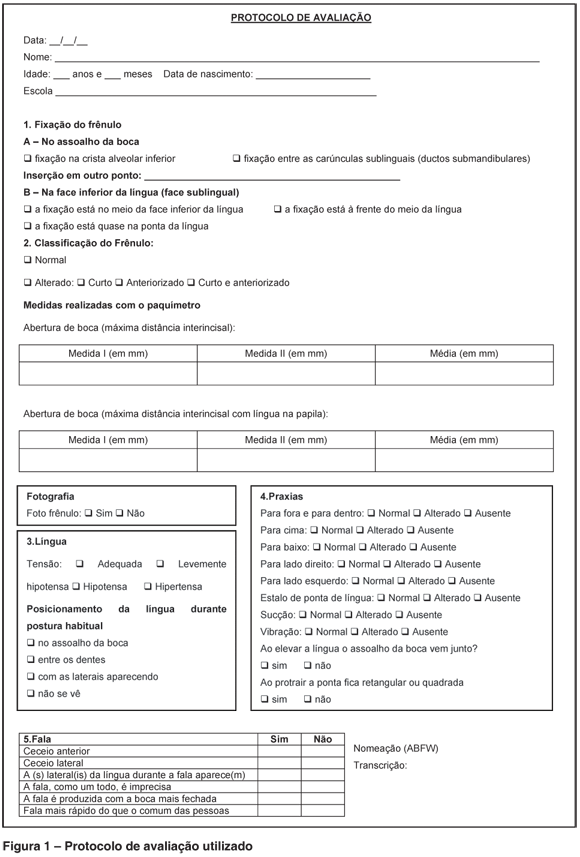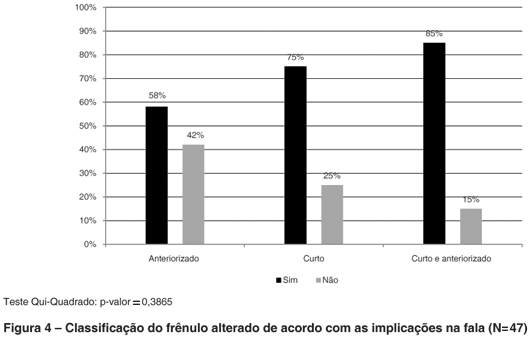PURPOSE: to check the prevalence of altered tongue frenum and its implications on the scholar's speech. METHODS: tongue frenum of 260 children between 6 and 12 years old was evaluated by three speech therapists using visual inspection and caliper measurements. The children that showed changes in all stages of the evaluation were those considered to be with frenum alteration. The speech was evaluated in those children with altered tongue frenum. RESULTS: the found data revealed that from the 260 children, 47 (18%) had altered tongue frenum, being 28 (60%) classified as short, 12 (25%) as anterior and 7 (15%) as short and anterior. There weren't differences between sexes. Modifications on speech were seen in 34 children (72%) of those that had altered tongue frenum. The prevalence of speech alteration was higher in short and anterior frenum (85%) followed by short (75%) and anterior (58%). The most founded common speech implications were distortion and locked articulation. CONCLUSION: a prevalence of 18% in altered tongue frenum was verified among the evaluated scholars, with no differences between genders. The short frenum is the predominant type, although the short and anterior ones are more related to altered speech. The most common speech characteristics in these cases are distortion and locked articulation.
Prevalence; Tongue; Tongue Frenum; Tongue Diseases; Speech Disorders; Speech Therapy









